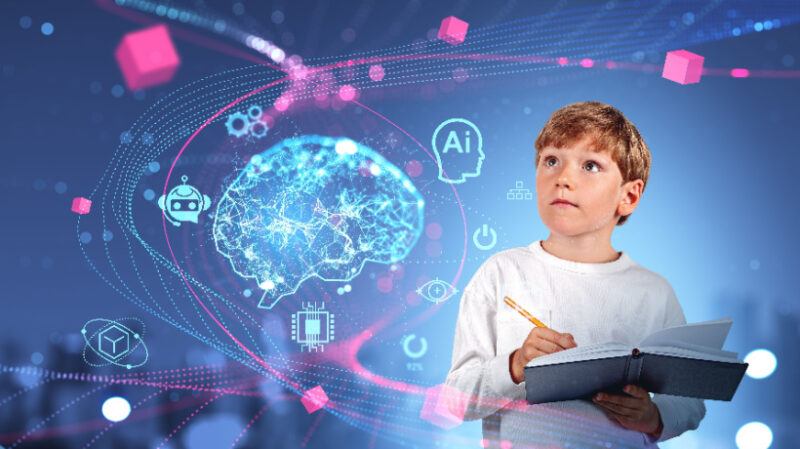
Enhancing Engagement And Personalization With AI-Powered eLearning
Artificial Intelligence (AI) is one of the most transformational technologies of our time. With AI-powered eLearning, educators can personalize learning experiences for each student, providing them with the best possible chance to succeed. In this guide, we’ll introduce you to AI-powered eLearning and its potential to enhance virtual learning experiences. We’ll also provide an overview of some of the most cutting-edge types of AI tools available to educators today.
The Benefits Of Using AI In eLearning
There are many benefits of using AI in eLearning. Perhaps the most obvious benefit is that AI can help create more engaging and personalized learning experiences. By tracking students’ interactions with course content, AI can provide insights that can help educators tailor future instruction to better meet students’ needs. Additionally, AI-based chatbots and virtual assistants can provide on-demand support for learners, 24/7. Other benefits of using AI in eLearning include:
1. Automated Grading And Feedback
Using Natural Language Processing (NLP), AI can automatically grade student essays and provide feedback at scale. This can free up educators’ time so they can focus on more high-level tasks such as designing courses and providing one-on-one guidance.
2. Improved Accessibility
By leveraging text-to-speech and speech-to-text technologies, eLearning courses can be made more accessible for learners with different types of disabilities.
3. Smarter Search
Course materials can be easily searchable using AI tools such as Latent Semantic Indexing (LSI). This allows learners to find the information they need when they need it quickly.
AI is a powerful tool that has the potential to transform eLearning. When used judiciously, AI can help create more engaging, personalized, and accessible learning experiences for all students.
Examples Of AI-Powered Tools Used In eLearning
There are a number of AI tools that can be used to enhance virtual learning. Here are a few examples:
- Chatbots
Chatbots are AI-powered software programs that can mimic human conversation. They can be used to answer questions, provide information and support, and even engage in small talk. Chatbots can be used in virtual learning environments to provide 24/7 support for students. - Virtual assistants
Virtual assistants are another type of AI-powered program that can perform tasks such as scheduling, managing email and calendars, and providing customer support. In virtual learning environments, they can be used to help students stay organized and on track with their studies. - Learning analytics
Learning analytics is the process of using data to understand how students learn. AI-powered learning analytics systems can analyze large data sets to identify patterns and trends in student behavior. This information can then be used to improve the virtual learning experience for all students.
How To Incorporate AI Into Your Online Classes
In order to take advantage of the benefits that AI can offer your online classes, there are a few key ways that you can incorporate AI into your course design and delivery. Here are a few examples:
- Use AI-powered chatbots to provide students with real-time assistance and answer common questions.
- Implement an AI-based Learning Management System (LMS) to personalize the learning experience for each student.
- Take advantage of automatic grading and feedback features offered by some AI platforms to save time on grading assignments and provide students with immediate feedback.
- Utilize speech recognition technology in lectures and other recorded materials to make them more accessible for all learners.
- Use predictive analytics to identify at-risk students and tailor interventions accordingly.
By incorporating AI into your online classes, you can take advantage of its many benefits to improve the overall quality of your courses and the learning experience for your students.
Common Challenges Of Using AI In eLearning
One of the main challenges of using AI in eLearning is developing algorithms that can accurately assess and grade student work. This is difficult because each student has a unique way of thinking and learning, so what works for one may not work for another. Additionally, AI systems must be able to handle ambiguity and uncertainty, which are inherent in many real-world situations.
Another challenge is designing eLearning content that is engaging and motivating for students. This is important because if students are not engaged, they are less likely to learn. Additionally, AI systems must be able to adapt to the changing needs of students over time. It is essential to ensure that AI-powered eLearning tools are accessible to all students. This includes students with disabilities or those who do not have access to technology. Additionally, AI systems must be designed in a way that prevents them from being biased against any group of people.
Conclusion
I hope this guide has provided an insightful overview of cutting-edge tools for enhancing virtual learning with AI. By leveraging the power of AI to automate processes, simplify tasks, and improve communication between teachers and students, educators can further empower their classrooms and take learning experiences into the future. As more organizations adopt these technologies in their institutions and businesses, I anticipate that virtual classrooms will become even more engaging and effective than ever before.
title_words_as_hashtags